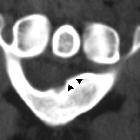Brachial plexus injuries







Brachial plexus injuries are a spectrum of upper limb neurological deficits secondary to partial or complete injury to the brachial plexus, which provides the nerve supply of upper limb muscles.
Clinical presentation
Trauma, usually by motor vehicle accidents, involves severe traction on the upper limb which leads to partial or complete nerve avulsion:
- C5/C6 involvement leads to paralysis of shoulder and biceps muscles
- C7 is involved, paralysis extends to wrist and hand muscles
- C8/T1 involvement leads to paralysis of the forearm flexors and hand intrinsic muscles
Also, birth (obstetric) injuries can involve the upper trunk leading to an Erb palsy or the lower trunk resulting in a Klumpke palsy.
Pathology
Non-obstetric plexus injuries can result from both blunt and penetrating trauma with motor vehicle collisions, in particular motorcycles, the most common cause .
Classification
In the simplest form, brachial plexus injuries can be classified as preganglionic or postganglionic, however, in clinical practice they can be mixed . Each injury has very different management and prognosis.
- preganglionic
- injury proximal to the dorsal root ganglion, therefore, affecting the CNS which does not have the capacity to regenerate
- e.g. nerve root avulsion
- postganglionic
- distal to the dorsal root ganglion affecting the PNS which does have some capacity to regenerate
- e.g. nerve ruptures and lesions in continuity
Brachial plexus injuries can also be more specifically classified into six types by CT myelography.
Radiographic features
Fluoroscopy
Conventional myelography is performed via intrathecal injection of iodinated contrast media. Nerve roots can be demonstrated as well as the leakage of contrast into the meningocele.
Advantages include high spatial resolution and absence of CSF flow artefacts. Disadvantages include improper filling of the meningocele sac in the presence of a dural scar, intra- and post-procedural complications e.g. hematoma, infection, allergic reaction and headache.
Nowadays myelography is almost always performed in conjunction with CT myelography.
CT
CT myelography widely replaces conventional myelography as it utilizes less contrast agent and hence less contrast reaction. Advantages include the ability to detect partial root avulsion, excellent visualization of bony structures, no CSF flow artefacts and multiplanar reconstruction. Disadvantages include high radiation dose, poor visualization of lower brachial plexus due to bony artefacts, pre- and post-procedural complications.
MRI
Together with direct visualization of nerve root and sleeves, spinal cord injuries present as edema in the acute stage and myelomalacia in the chronic stage. In preganglionic injury, there is usually an avulsion pseudomeningocele, which is a CSF filled structure at the site of the nerve root that does not contain any neural elements. There may be associated cord hematoma. Postcontrast enhancement of nerve root suggests functional impairment even if it appears continuous. Abnormal enhancement of paraspinal muscles is an indirect sign of root avulsion.
MR myelography
This uses steady-state coherent gradient echo sequences which imply high contrast to noise ratio and reduce flow artifacts. It can easily identify nerve roots and meningocele sac even if there are intradural scars.
Diffusion-weighted neurography
A recent modality which can demonstrate postganglionic injuries as discontinuation of injured nerves.
Treatment and prognosis
Depends on the site of injury and degrees of damage . Preganglionic injury is repaired by nerve transfer (usually an intercostal nerve) to the denervated muscles, as there is no chance of spontaneous neural repair. Postganglionic injury is treated conservatively or with nerve grafting, where a nerve autograft is sutured between the excised damaged nerve segment.
Siehe auch:
und weiter:

 Assoziationen und Differentialdiagnosen zu Verletzungen des Plexus brachialis:
Assoziationen und Differentialdiagnosen zu Verletzungen des Plexus brachialis:
